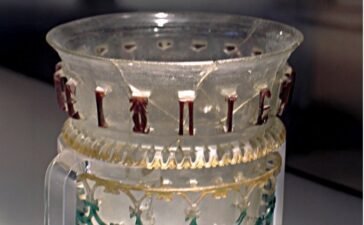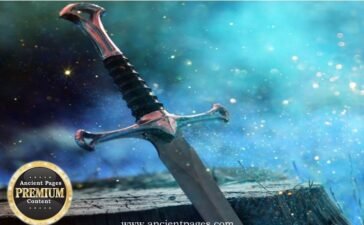Eddie Gonzales Jr. – AncientPages.com – Approximately 360 million years ago, during the Late Devonian Period, a formidable armored fish called Dunkleosteus terrelli dominated the shallow subtropical seas that once covered what is now Cleveland. This species belonged to the arthrodires, an extinct group of shark-like fishes characterized by bony armor protecting their head and torso.
Instead of traditional teeth, Dunkleosteus possessed sharp bone blades in its jaws, making it one of the largest and most fearsome predators of its time. Cleveland’s prehistoric sea monster had a mouth twice as large as that of a modern great white shark.
Dunkleosteus terrelli is recognized as Earth’s first vertebrate “superpredator,” thriving during the Age of Fishes, when North America was positioned near today’s Rio de Janeiro. Since its discovery in the 1860s, this prehistoric giant has fascinated both scientists and the public alike. Its distinctive skull and jaw structures are displayed in museums around the world. However, despite its popularity and iconic status among prehistoric animals, Dunkleosteus has received relatively little scientific attention over the past century.
Newly described muscle anatomy (right) and overall jaw anatomy of Dunkleosteus terrelli (center), compared to a more typical arthrodire (left). Credit: Russell Engelman/Case Western Reserve University
An international team of researchers, led by Case Western Reserve University, has recently published an in-depth study on Dunkleosteus that offers new insights into this ancient armored predator. Although Dunkleosteus is often seen as the quintessential representative of the arthrodire group, the study reveals that it differed significantly from most of its relatives and exhibited several unique characteristics.
“The last major work examining the jaw anatomy of Dunkleosteus in detail was published in 1932, when arthrodire anatomy was still poorly understood,” said Russell Engelman, a graduate student in biology at Case Western Reserve and lead author. “Most of the work at that time focused on just figuring out how the bones fit back together.”
Arthrodire fossils present unique challenges for paleontologists. Because these ancient fish had bodies primarily composed of cartilage, only their bony head and torso armor are commonly preserved in the fossil record. Additionally, their remains are often found crushed and flattened, which can complicate efforts to accurately study and reconstruct these prehistoric creatures.
“Since the 1930s, there have been significant advances in our understanding of arthrodire anatomy, particularly from well-preserved fossils from Australia,” Engelman said. “More recent studies have tried biomechanical modeling of Dunkleosteus, but no one has really gone back and looked at what the bones themselves say about muscle attachments and function.”
A team of researchers from Australia, Russia, the United Kingdom, and Cleveland has advanced the study of Dunkleosteus by examining specimens housed at the Cleveland Museum of Natural History, which boasts the world’s largest and best-preserved collection of these fossils.
Dunkleosteus is believed to have existed globally during the Devonian period. However, unique environmental conditions in ancient Cleveland led to an exceptional preservation of skeletal remains in what is now a layer of black shale rock. This layer has been revealed over time through river erosion and road construction projects in the area.
The researchers’ detailed anatomical analysis revealed several unexpected findings:
- A cartilage-heavy skull: Nearly half of Dunkleosteus’ skull was composed of cartilage, including most major jaw connections and muscle attachment sites—far more than previously assumed.
- Shark-like jaw muscles: The team identified a large bony channel housing a facial jaw muscle similar to those in modern sharks and rays, providing some of the best evidence for this feature in ancient fishes.
- An evolutionary oddball: Despite being the poster child for arthrodires, Dunkleosteus was unusual among its relatives. Most arthrodires had actual teeth, which Dunkleosteus and its close relatives lost in favor of their iconic bone blades.
Rewriting arthrodire evolution
The study provides important evolutionary context for Dunkleosteus, revealing that its bone-blade specializations—and those of its relatives—were adaptations for hunting large fish. Notably, these features evolved independently in other arthrodire groups as well. The blade structures enabled these predators to bite sizable chunks from their prey, according to Engelman.
Graphical abstract showing the relative size of Dunkleosteus compared to a human figure—before and after the new calculations. Credit: Russell Engelman/Case Western Reserve University
These findings emphasize that arthrodires were not primitive or uniform animals; rather, they represented a highly diverse group of fishes that thrived in various ecological roles throughout their history. As Engelman notes, this research reshapes our understanding of both Dunkleosteus and the broader diversity within arthrodires, demonstrating that even well-known fossils can still provide valuable new insights.
Source: EurekAlert
Written by Eddie Gonzales Jr. – AncientPages.com – MessageToEagle.com Staff Writer








